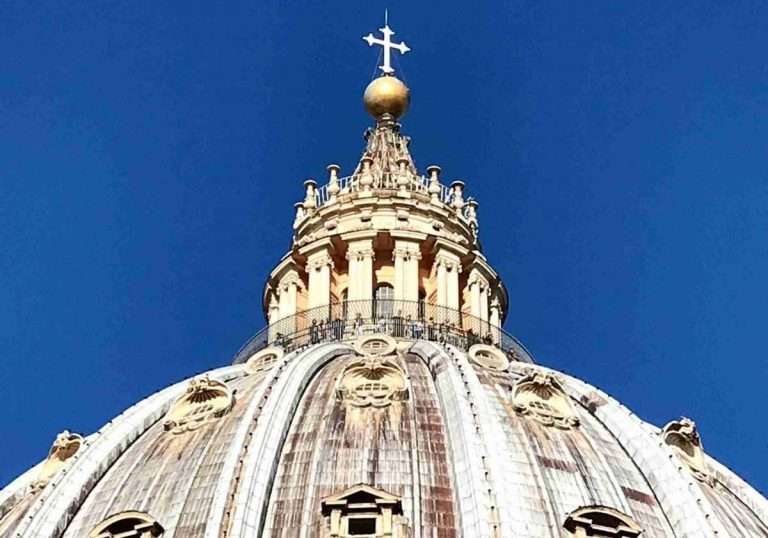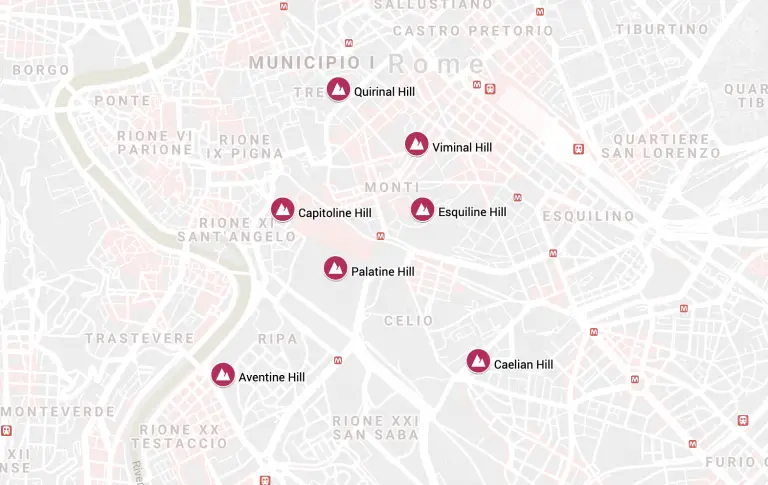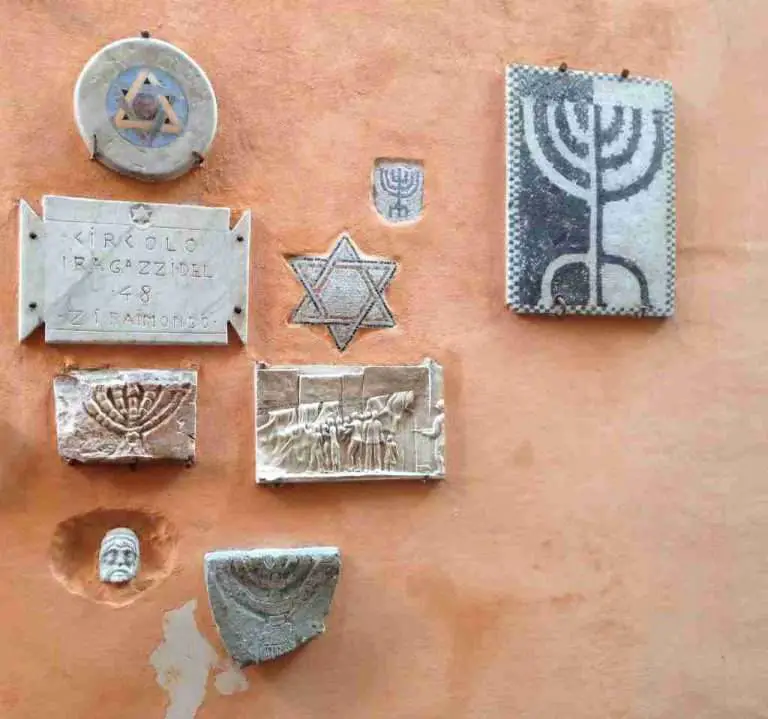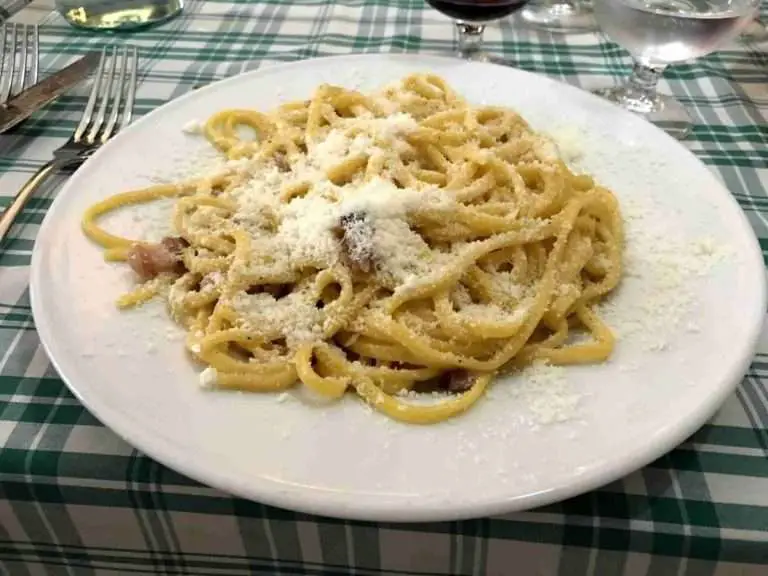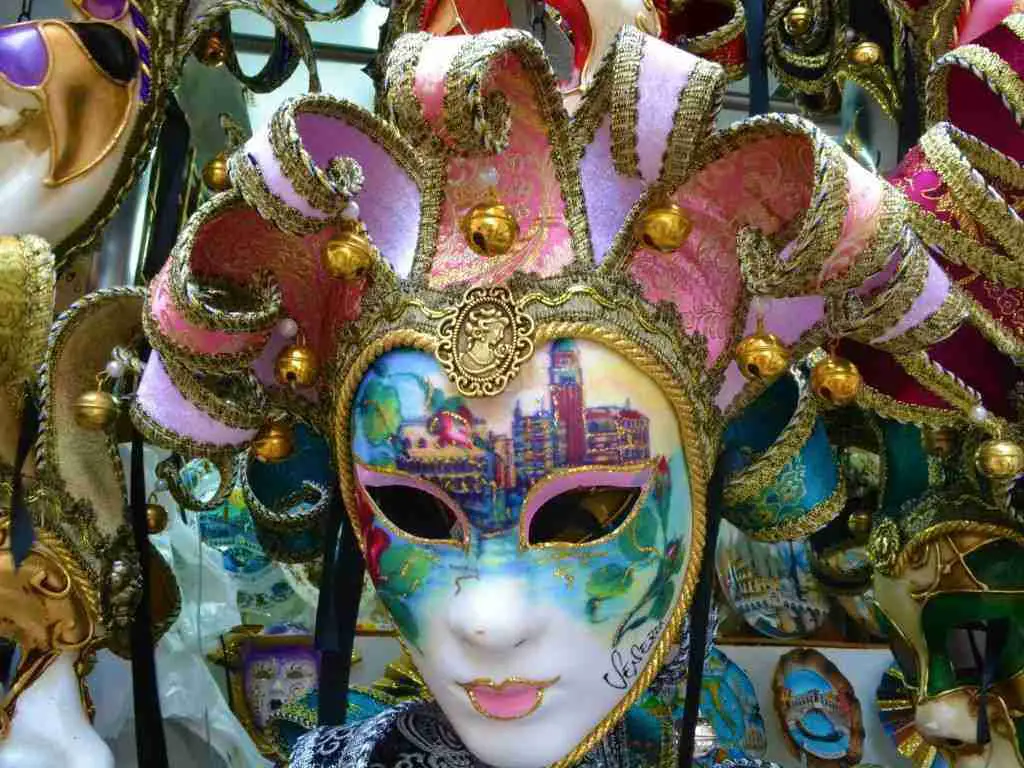
Carnival time is when Italians prepare to “take away meat” (carnem levam) by throwing lavish parties and parades featuring masks, floats, and lots of food.
Carnival season usually lasts several weeks, with the biggest celebrations taking place in the days before the beginning of Lent. Fat Tuesday/Mardi Gras, called Martedì Grasso in Italian, is the day when the last handfuls of confetti and the last bonfires burn out in advance of Ash Wednesday. Then it’s time to hunker down and sober up for 40 days and nights of denial during the Holy Lenten Season, the time between Carnival and Easter.
Many travelers think that Carnevale only takes place in Venice. It’s true that Venice may have the best-known carnival in the world. But many other cities in Italy have long carnival traditions and equally lavish pre-Lenten parties.
Let’s have a look at some of Italy’s most famous carnival traditions in Venice, Viareggio, Tuscany; Ivrea, Piemonte; Acireale, Sicily; and Mamoiada, Sardinia.
Viareggio, Tuscany

After Venice, Viareggio has one of the best-known and best-attended carnivals in Italy. Around one million revelers descend on the Tuscan seaside town each year.
Presiding over the festivities is Burlamacco, a smiling black, white, and red harlequin that has been the symbol of the Viareggio Carnival since 1930.
The Viareggio Carnival is not the oldest in Italy – it began in 1873 – but it resembles the type of Mardi Gras celebrations that you might see in New Orleans, with papier maché floats, bands, and more. In fact, on Martedi Grasso, the Viareggio Carnival is broadcast live on Rai3, giving Italians a chance to see parade floats gliding down the 2km-long Passeggiata.
Viareggio has become so synonymous with carnival time, that it thinks about the carnival year-round and even hosts a summer carnival. To manage all this partying, the city built the Cittadella, a hangar complex that serves as a space for float construction, art shows, and concerts. Viareggio also has a carnival museum.
The official Carnevale di Viareggio website has more information on the history of the carnival as well as links to purchase tickets.
Ivrea, Piedmont

Many moons before Instagram and YouTube made Ivrea a bucket list destination, the Piedmontese city was known by word-of-mouth as a city with a quirky carnival celebration. That celebration, known as the Battle of the Oranges (Battaglia delle Arance, dates back to a 13th-century rebellion led by a strong-headed woman (Violetta), the miller’s daughter (mugnaia) who refused to consummate her marriage with a tyrannical baron.
She went to the castle, beheaded the baron and incited the people to revolt, leading to the destruction of the castle, which was never re-built, and the institution of a free municipality.
Storico Carnevale Ivrea
YES!
Until the 19th century, the Ivreani threw beans (fagioli) as a way to reject the bean rations that their feudal master had provided them.
Oranges got thrown into the mix in the mid-19th century when young girls on balconies along the parade route would throw the fruit to get the attention of the handsome boys in the parade below.
It was only after World War II that the Battle of the Oranges took on the form that is has today, with nine groups of throwers on foot battling masked “soldiers” on a horse-drawn cart.
The Battle of the Oranges has evolved over the ensuing years, featuring (somewhat) less violence and more fun. And it is only one part of a very storied carnival festival.
For example, beans remain central to the traditions of the Ivrea Carnival. The Fagiolate Rionali, are bean feasts that are held in 11 different neighborhoods around the city. These feasts of fat beans (fagioli grassi), plumped up with salami and seasonings, feed festival-goers and the needy during the days leading up to Fat Tuesday.
The Carnevale Ivrea also features a parade with marchers in medieval costumes; a scarlo, a juniper and heather bush that is set alight to mark the final day of revelry; and a funeral march, the final act of the carnival.
Learn more about the Historic Carnival of Ivrea.
Acireale, Sicily

I don’t know about you, but I think Carnival is best celebrated in a warm climate (à la Rio). Warm weather just goes better with the Bacchanalian feast that Carnival and Mardi Gras have grown to become. So Sicily seems like the perfect sunny spot in Italy to spend a later winter holiday.
The weather is not exactly balmy in Sicily at Carnival time. But it is typically warmer here than in Venice, where harsh Adriatic winds can chill you to the bone.
The Sicilian town of Acireale hosts Sicily’s most famous carnival, with plenty of floats and masks. Acireale is a coastal town located between Catania and Taormina at the foot of Mount Etna, which makes for a sublime carnival setting.
During the carnival, float-building “crewes” compete in three different categories: flower, allegorical, and miniature. These floats, part of the festivities since 1880, pass along Acireale’s three most important streets, Corso Italia, Corso Savoia, and Corso Umberto. Participants also wear masks, many of them designed to look like celebrities and political figures.
Mamoiada, Sardinia

Being cut off from the mainland of Italy all these years has allowed Sardinia to develop and more closely preserve many of its own traditions.
This is certainly true of Carnevale in Mamoiada, which appears to be the most traditional — if not the most scary-looking — carnivals in Italy.
This festival, which pits the black-masked Mamuthones and the white-masked Issohadores in a sort of dance with cowbells and lassos, is thought to have originated from pagan rites which were later incorporated into the pre-Lenten celebration.
This truly bizarre tradition is one of the most legendary in Italy. So, you would do well to visit Sardinia during carnival time to witness this event.
Venice

Now to the grandaddy of them all: Carnevale in Venice.
This is one of the Lion City’s premier events as well as one of the biggest events of the late winter in Italy. The 10-day festival takes place across the entire city’s sestiere (districts), including San Marco, San Polo, Cannaregio, and Dorsoduro, and the islands of the Venice Lagoon (Murano, Lido, and others).
Activities include magic and puppet shows for children; music, dance, and theater performances; cooking contests and food fairs; and costume contests and masquerades that see Venetians dressed in traditional clothing and, yes, those beautiful and sometimes elaborate masks that have been a symbol of Venice since Renaissance days.
This post was first published on February 5, 2010, and is frequently updated.

